So they do admit that "Elohim" is plural for gods not one God
Comments
Check out our elevator pitch or sign in
Next Up...
Manly Hall About the Tetragrammaton
Interestingly, he calls YHWH the Demiurge of the Jews.
This is quite ambiguous in terms of what role he actually prescribes to him. Creator of the physical universe from the perspective of the Jews? Or something lesser as in creator of a specific part of the universe associated with the the Jews?
I haven't read the book, yet. Just came across this during editing.
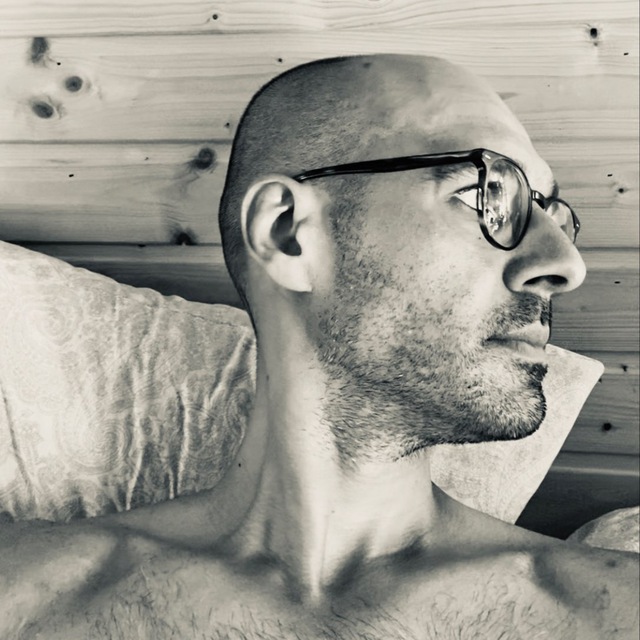 Andreas
Andreas4th Eurasian Economic Forum kicks off in Minsk.
 Drulia
DruliaAncient Symbology Surrounding Alchemy Might Have Wider Implications Than You Think
Starting from the back of the video
1:32:11
You're not going to believe this when I show you this. This is going to be a watershed—it's a watershed in my life. I hope it's a watershed in your life.
You will know 100% certainly that thousands of years, possibly, but certainly hundreds of years of lying has been going on.
I suggest thousands of years, or incredible ignorance—incredible ignorance. You just could not see it.
But I actually think that the evidence suggests that there's been a ridiculous effort to prevent this from being understood.
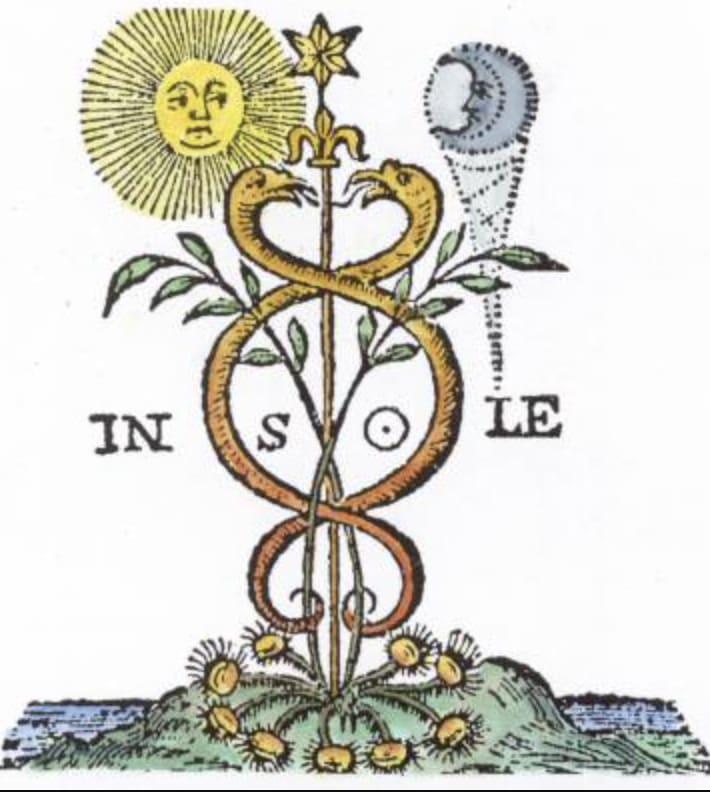
I'll give you an example: whenever you get into low energy nuclear reactions (or what was formerly misnamed cold fusion, coherent matter nuclear reactions, the effect of the fractal toroidal moment in my book), what people will say is:
“Oh, that's nonsense. It's just what—alchemy? You believe in alchemy?”
I'm going to tell you today: Yes, I do believe in alchemy. Yes, alchemy is real.
You are going to know 100% that people that supposedly never had a computer, never had the ability to do what I've just shown you on an SEM, you're going to know that:
They knew this. And didn't know it slightly. They knew it utterly and completely and precisely.
Someone who was maybe even in the link today sent me this image because it reminded him of the structure I derived from experiment.

This was a ring.
It says:
Fulcanelli ring — believed to have been made with gold obtained by transmutation.
This is the Fulcanelli ring:
Sun, Moon
Sun, Moon
Triangle thing that's offset to one side and centered
A thing up here—the little cross
This is from 1922.
Yes, 100 years ago.
And it's 2022 here in the Czech Republic.
It belonged to a character called Fanelli (pseudonym—not his real name), who was supposed to be a Templar that had achieved the Great Work, the Magnum Opus, and written some books.
In an article about him (Reference 8), it says:
"Through the breadth of his work, by interpreting the decor of cathedrals from the esoteric and alchemical perspective, Fanelli not only shed a totally new light on medieval art, but also created such emul that the approach to esoteric science was radically changed."
In the same article it says:
The Alchemist Julian Champagne (1877–1932), who was the illustrator of the works of his master F. Canelli, placed a coat of arms at the end of the book The Mystery of the Cathedrals.
I have overlaid this (as me talking) the sacred geometry on the coat of arms, and:
Yes, I think he was an adept alchemist and had likely realized the Great Work, including establishing what the Philosopher's Stone was.
There is no shadow of doubt in my mind that this coat of arms precisely shows the structure.
"Hi Triton."
So thank you for sharing that.
Here's Triton again—Triton Jager.
Triton sent me a link because it resembled both the sacred geometry structure I had established from experiments and also looked a little like the Frank Pfus Windx.
Indeed it does.
He also sent me another link that shows a similar graphic.
In this case:
Sun on the left, Moon on the right (typical in a Masonic Lodge)
In this other case, Sun on the right—that’s Ra, the Egyptian symbol for the Sun
This is also a ring
And spot orthogonal to this plane
This shows a wheel in my view within a wheel
This is the out and the in
And it’s interesting that, in electric current, they show the current:
Coming towards you with a ring spot
And a cross on the way back
Anyway—that’s that.
Here we have what I would argue is the disruption beam, and the triangle going in.
It’s very highly stylized.
And here’s the 101 of the Masonic Order.
So there we go.
When you do a reverse image search for this on Google, you immediately get Eye of Providence images and related material.
On doing further research, I came across the images described below.
This image is:
De Calvos Metallium Occultist’s Key — Lapis Veneris of the Cave of the Hidden Metals
“You are the venerable Stone.”
—from Hermes, frontispiece from the Hermetical Triumph or The Victorious Philosophical Stone, Anonymous, 1740.
So this is from 1740—that is nearly 300 years ago.
And look what we see.
I decided to compare it to some experiments in sacred geometry, as well as the Windx.
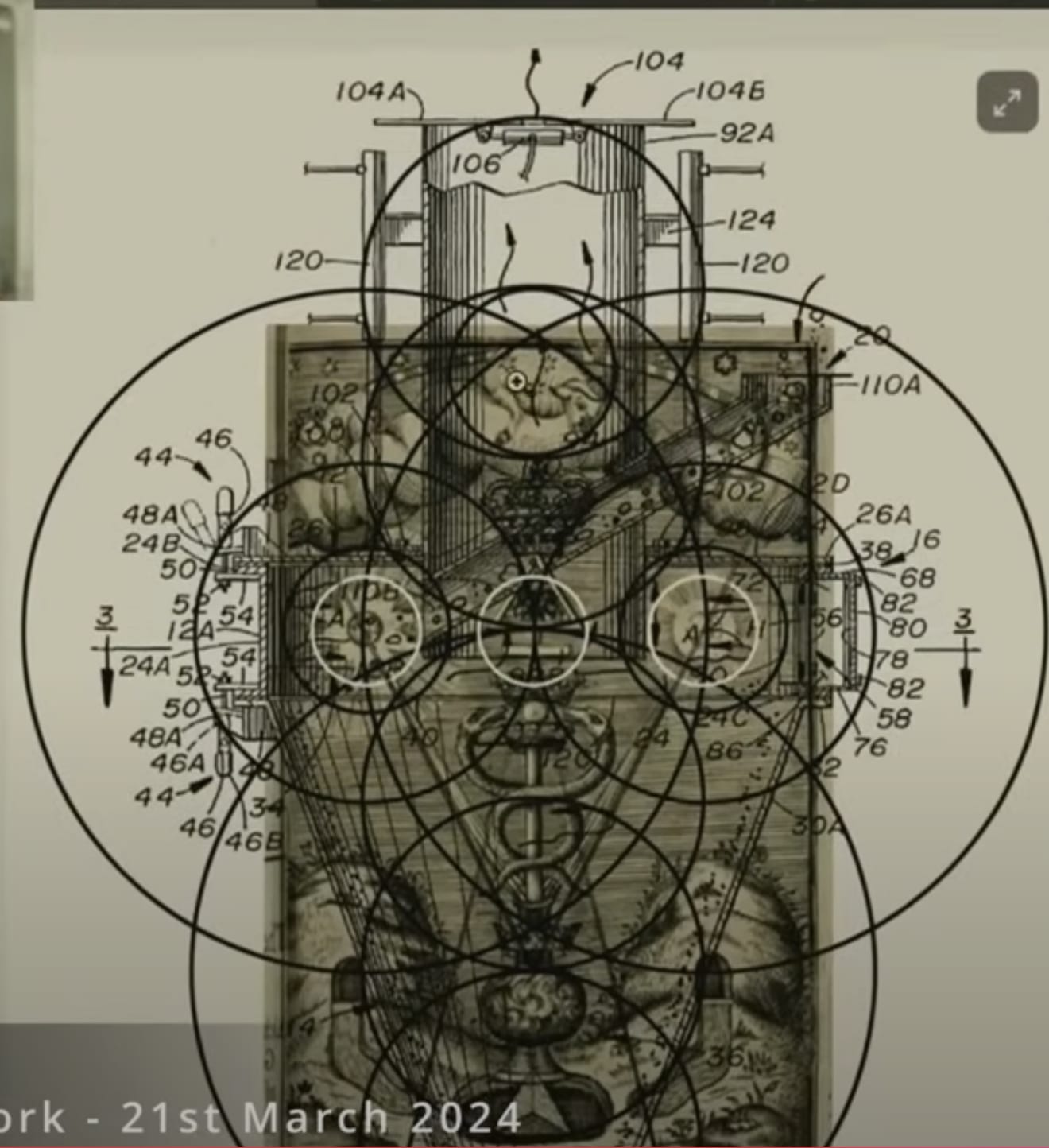
Here is the result:
Flow pan
Sacred geometry structure
(This is a normal orientation, but for some samples I had to flip it—just like the ring is flipped from the imagery in the other one)
Down here: Ether, the Spirit
It comes up
You have the Destruction Zone—just like you do on Tesla’s Wardenclyffe Tower if you move the electrode down too far
Very specific areas up here—very carefully defined by this overall structure
You have:
The crown
The triangle
This cross-beam line here
Now just to say—
Look, I’m not saying the Masons have been hiding something.
What I say is:
At the very least, what we can know for certain is that they’ve been trying to tell everyone—whether they knew it themselves.
As I’ve shown you before:
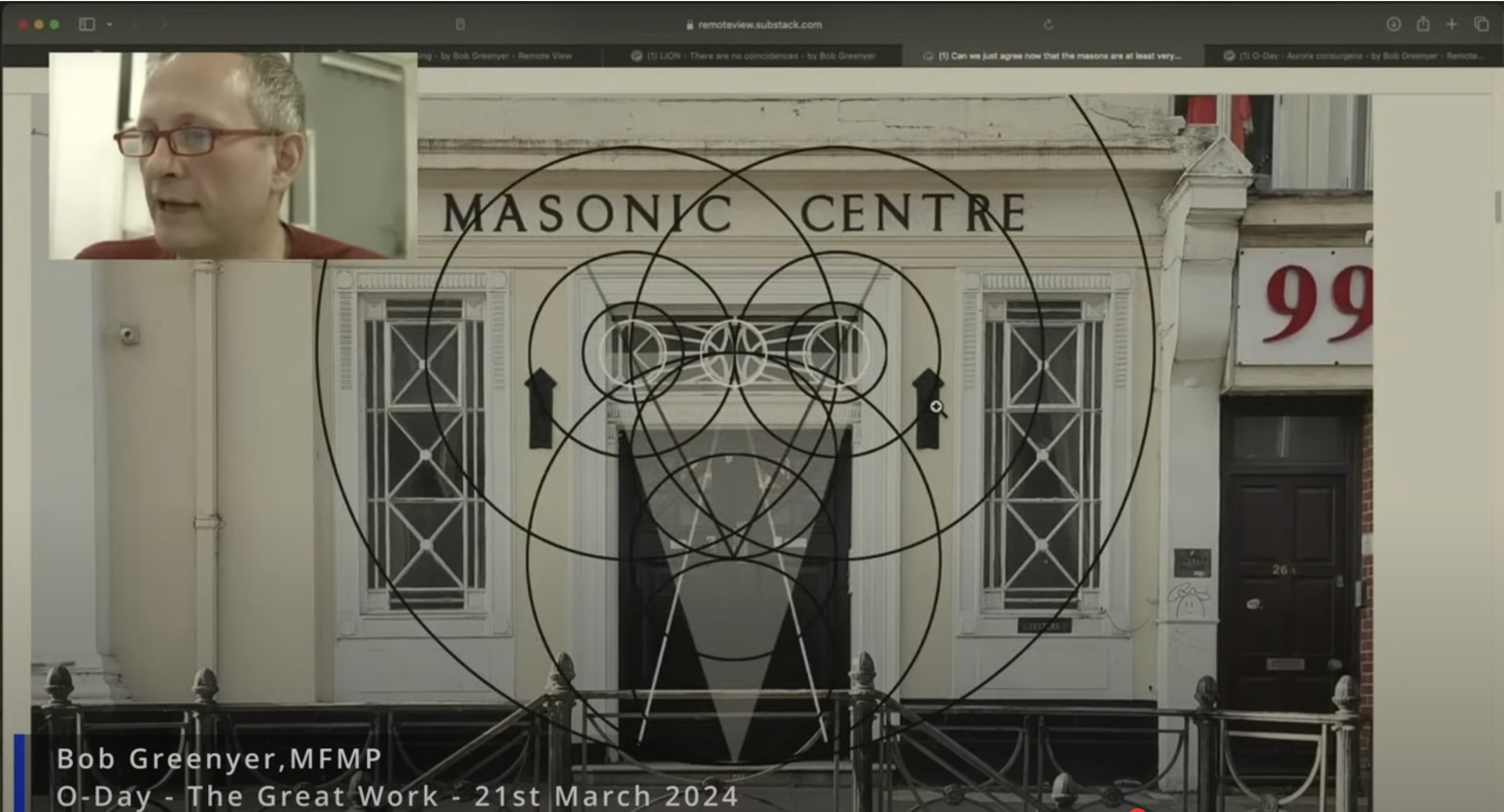
The Masonic Lodge in Brighton—and every single thing about it is nearly perfect.
The only thing I’ll say is:
If you were to have the soic triangle not go to the center here, but move up—
Then, if it was extended out:
Firstly, it would be a little bit further over at this point
And it would extend out to the bottom of the door
Bear that in mind when I show you what I’m going to show you.
Down here you can see the VRA—on a coin from 234 Before Christ.
234 Before Christ!
And this is a VRA.
I’ve shown other Macedonian coins with:
The Thunderbolt
The Chi-Rho
The Theadius—very common symbols
The Thunderbolt—or part of the Thunderbolt.
Almost all of these important symbols that you see on coinage for thousands of years are representations of ball lightning.
Now I showed you in 1733—so here we go, 1740...
In 1733, we have this Masonic Lodge.
(I don’t know whether that’s the name of the street, but it had to have 33 in it, didn’t it?)
I mean—it just had to have 33.
So I don’t know whether that’s the name of the street, but anyway—
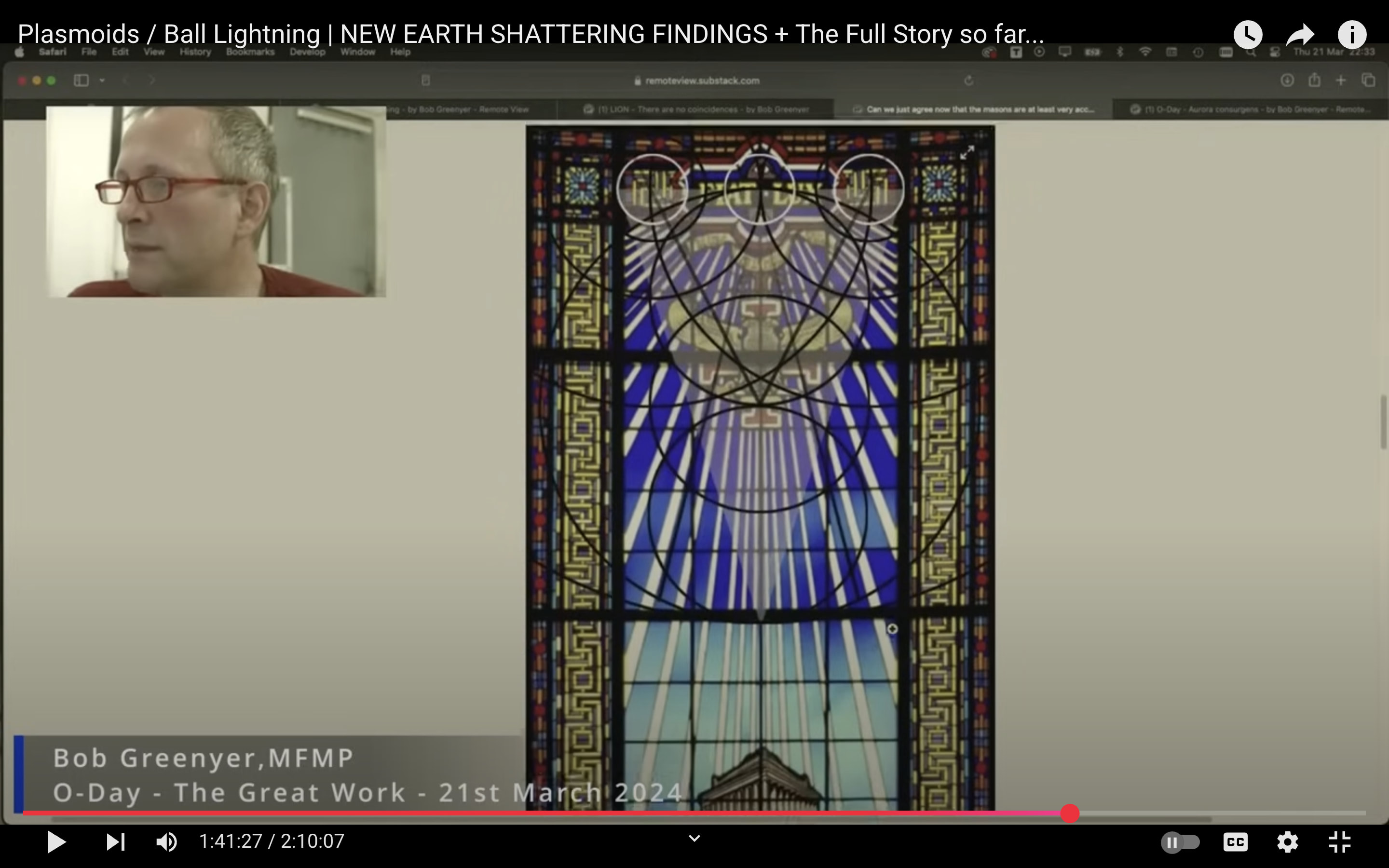
In there, we have:
The sacred geometry
One rotation of sacred geometry from the top-down structures, or what we might like to call:
Auspicious symbol
And that’s:
Sun on one side
Moon on the other
Together they make an overall structure
With your beams coming out
“AO”
Introduction to the technology
(beginning of the video)
So, this has been a really big week for everyone who’s been following the development of Bob Greenyer’s new research on ball lightning—or plasmoids formed via bubble cavitation—and his analysis and testing of Malcolm Bendle’s Thunderstorm Generator, Dr. Bing Wayne Wang’s fusion reactors, and other cavitation systems working on similar principles.
We’ll talk a bit about this and reference some of these other systems a little bit later in the video, too.
So, Bob’s recent findings, which he presented unfiltered, spread over several live streams and videos on the Martin Fleischmann Memorial Project (MFMP) YouTube channel last week, are really serious findings. The potential implications for nearly every field of science and for every human on Earth are absolutely profound. There’s no other way to put it. This isn’t a drill. I’m not exaggerating.
For a fact, this has actually been quite an emotional week if you’ve been following all of this.
A quick pause to offer thanks to everyone who’s been sharing and liking the videos and particularly a very special thank you to those who donated to the channel. It’s really not easy to work open-source, and it’s directly thanks to you guys that I have time to spend on this video today. And remember that Bob and, MFMP also work in the open-source domain, and you can find their donation links in the description of any of their videos. So, these types of projects are for the community, and they’re funded by the community, and that’s the way things stay out in the open. So, thank you, guys.
So, what are we going to cover in this video? First, I will give you a brief and easy-to-understand overview for the newcomers or those who just got a little bit lost on the way—uh, what the technology actually is, what it does, and what the processes behind it are. So, we’ll introduce some of the researchers, the inventors, and the other main players who’ve been involved in the collective research around plasmoids or ball lightning and how these phenomena can be reproduced and harnessed using various synthetic systems, including, of course, the Thunderstorm Generator, which has been my own passion project for a while now and that was my introduction to Bob’s work, too, and many of these other researchers and systems when I just kind of found out this was way bigger than just the Thunderstorm Generator—although that is a very special system on its own. So, this should set the scene nicely and get everyone up to speed. So, in the second part of the video, we’re going to break down Bob Green’s recent earth-shattering findings and explain what they mean for science, for history, for reality, and for the Thunderstorm Generator and other cavitation systems.
What is this old-new technology? What is it doing? What are the processes behind it? We’re going to start with the basics here, just build up to the most recent findings, tell the full story. So, essentially, this technology itself—no matter which system we’re discussing—is all about water bubble cavitation. So, in simple terms, this means forming a bubble in water, with a few specific requirements, and then collapsing this bubble. So, we want to do this because when bubbles are collapsed or imploded under just the right conditions—uh, what Dr. Matsumoto termed “electron-nuclear collapse”—they produce an unusual phenomenon we call this phenomenon a plasmoid or a charge cluster, ball lightning, or an exotic vacuum object.
So, essentially, the bubble, when collapsed symmetrically into this toroidal geometry, produces a homeostatic fractal ball of lightning that does not immediately dissipate and which can actually feed on anything surrounding it, taking in surrounding gases like hydrogen, carbon monoxide, and carbon dioxide and even denser matter like carbon, iron, and other heavier elements, ripping them apart at an atomic level and harvesting them as energy. So, any deconstructed excess energy—uh, to the requirements of the plasmoid—is ejected in the form of free protons and electrons, which then quickly reform and synthesize new elements. So, this process of stepwise synthesis or transmutation has a signature pattern which Bob has clearly identified and outlined in his new findings, but we’ll get to this soon.
So, the reason why they’re sometimes referred to as charge clusters is because ball lightning is fractal in nature—smaller, homeostatic structures collect together to form larger homeostatic structures, and this is all occurring fractally on multiple levels. So, Bob often refers to this as “a wheel within a wheel within a wheel within a wheel,” a phrase I’ve also used to describe this concept in the past, and this is actually from a Bible verse. These phenomena are also found to be naturally occurring—uh, as a ball lightning whizzing through the sky or flying out of a power line or electronic device, seen as a child has been the inspiration for many researchers’ later interest in careers in this field of study. I’ve certainly spoken to many.
So, after they’re formed, the toroidal plasma structures are then employed in subsequent phases of the system, to instigate further reactions. So, for example, in the Thunderstorm Generator, the primary focus so far has been on the transmutation of carbon monoxide, carbon dioxide, and hydrocarbons from the exhaust waste stream of the internal combustion engine and coal power plants, generators into oxygen, nitrogen, or other more suitable elements in this context using no additional energy input. So, this gives us a mechanism with which we can essentially control all pollution caused by the burning of any carbon-based fuel source and also a way to remediate degraded environment—land, air, and sea—almost effortlessly, considering we already use combustion engines for nearly everything. And there’s also some increased fuel efficiency in the engine, due to the plasma structures being both a charged fuel source themselves and a catalyst for the synthesis of other combustible elements, like increased ratios of hydrogen and oxygen that can go into the engine.
So, various other cavitation systems—some of which I mentioned earlier—are producing the same ball lightning structures, which are leaving behind the same highly cohesive pattern of geometric and chemical signatures. The goal of most of these systems has been primarily to just be able to observe and study these formations and reactions and explore how they can be reliably reproduced on a small scale. But in the case of the Thunderstorm Generator, it’s actually in the pre-production prototyping phase already, with the eventual goal of being mass-produced and rolled out on scale to solve a number of practical global issues. And this is kind of updating every week, getting much more serious.
So, to summarize, the various instances of the technology—including the Thunderstorm Generator and Dr. Bing Wayne Wang’s reactors, the systems we will be primarily focusing on in this video—they’re all used to produce tiny water bubbles, which are then imploded under specific conditions to form homeostatic fractal charge clusters, which we call plasmoids or ball lightning. And these plasma structures are then used as a catalyst for further reactions, which can transmute one element to another element, and they can also act as a fuel source themselves.
So, there are various other processes behind the overall results obtained by specific systems., the Thunderstorm Generator, for example, creates extreme hydrodynamic shear in the next stage of the system by polarizing two opposing hot and cold, expanding and contracting, counterclockwise and clockwise vortices—uh, much like the Ranque-Hilsch vortex tube, which you all may have heard of by now. So, this appears to amplify the results, that can be achieved with such a system dramatically, and it takes advantage of much the same process that’s involved in the generation and formation of plasmoids themselves, just at a larger scale simultaneously. So, this is where we need to introduce the story of Bob Green and Malcolm Bendall.
All right, the other name I mentioned—Bob Greenyer—is an open-source volunteer researcher at the Martin Fleischmann Memorial Project, a group of independent scientists who were carrying on the work and legacy of Mr. Fleischmann, who was a British electrochemist and a cold fusion researcher who unfortunately passed away in poor health and without really seeing mainstream acceptance of his work in 2012.
So, Malcolm Bendle spent a week with Martin Fleischmann in his later years as well, discussing cold fusion and promised him to help finish his work. So, Martin’s research has been a common inspiration for both Bob and Malcolm. But going back to Bob himself, he’s been involved in this research for at least the last decade. He was one of those guys I mentioned that saw naturally occurring ball lightning when he was younger and just couldn’t shake the curiosity until he eventually devoted his life and career to solving the mystery.
So, Bob’s been involved in numerous experiments studying cavitation and ball lightning over the last decade with MFMP, such as his work on the Supernova Reactor, the Ultra Experiments, Neil Kryon Gold’s Lion Reactor, Hank Yuan’s Vega Experiments, Malcolm’s Thunderstorm Generator, and of course his work with Dr. Bing Wayne Wang and their colleagues on their fusion reactors in Taiwan. And they recently published a peer-reviewed paper, in the journal Nature on the same, which we’ll talk about in a little bit. But these projects only really constitute the tip of the iceberg of Bob’s knowledge and experience. He has an encyclopedic knowledge of current and historical cold fusion research, over the course of his decade with the Martin Fleischmann Memorial Project.
He’s reviewed and shared the work of many other significant contributors to the field, including a number of experiments and documents that had not been publicly available in English before. Some significant names in the field that Bob has either collaborated with or promoted or reviewed the work of throughout his time with MFMP include:
Takaki Matsumoto
Ken Shoulders
Anat Klimov
Anatoli Nicotin
Max Fomichev-Zamv
Alexander Shishkin
Alexander Paranowski
Slobodan Stankovic
—and this list is in no way definitive. You’ll find the work of many other global fusion and cavitation researchers showcased or referenced over on the MFMP YouTube channel, and I can’t stress how important this repository of open-sourced research actually is because if you start Googling some of these names, you’ll find that a lot of this stuff is really not that easy to find, if you’re not directed explicitly where to find it.
 Andreas
Andreas